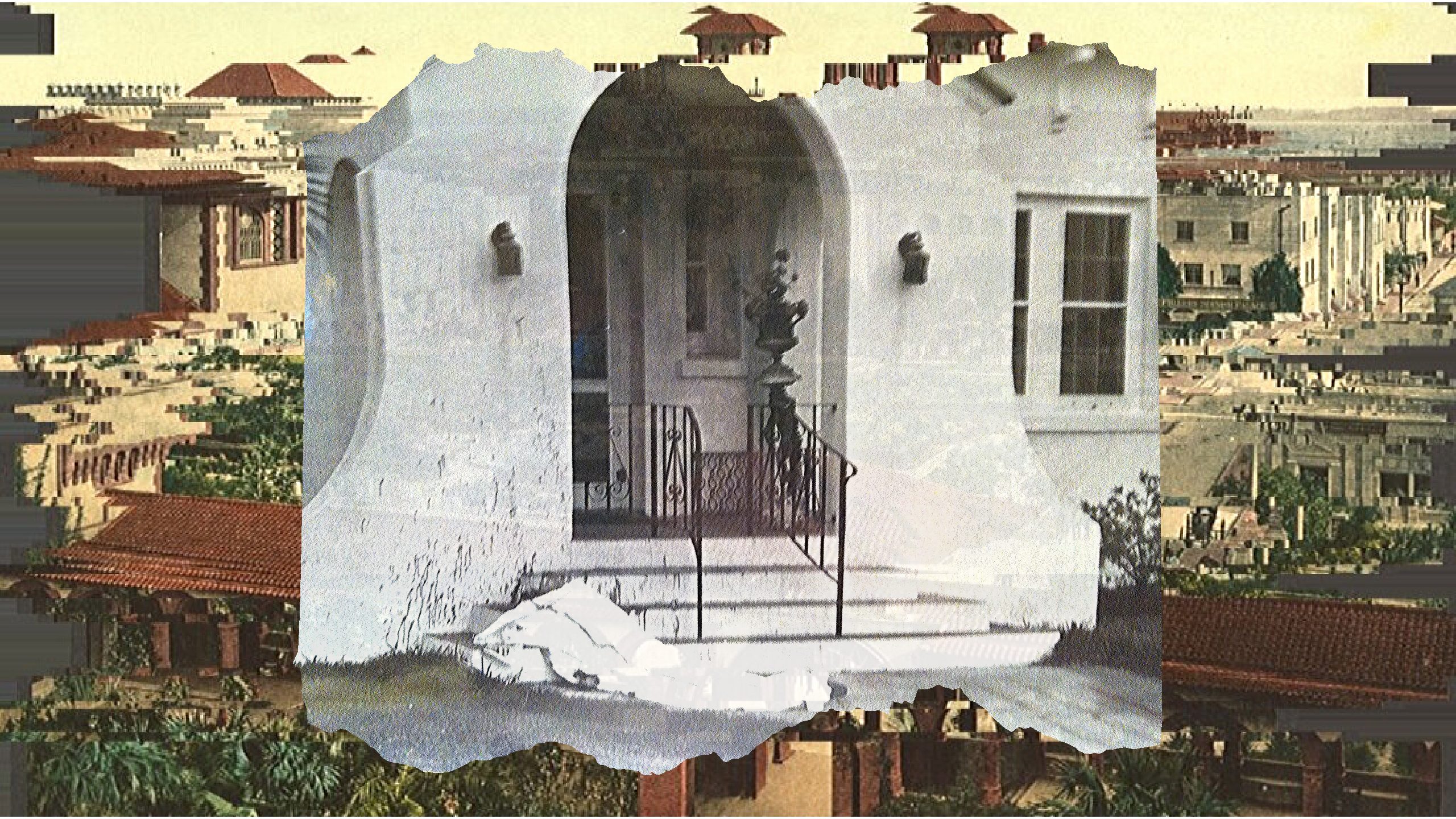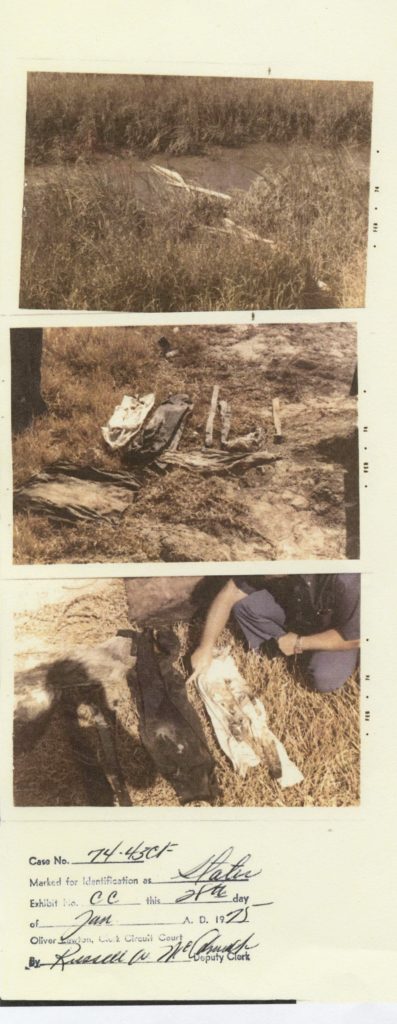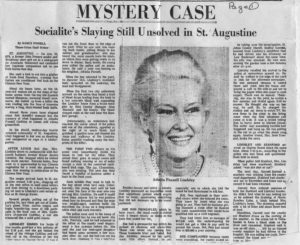
Previously on Crime Capsule, we took a look at what happens when the dead begin to speak: when DNA evidence helps to convict a criminal, and how that evidence can change the course of a case. As the case of Tina Faelz showed, evidence can sit for years, even decades, before a case is reopened and new tools of investigation are brought to bear.
Unfortunately, however, law enforcement isn’t always so lucky, as a case down in St. Augustine, Florida, reveals.
In her book Murder in St. Augustine: The Mysterious Death of Athalia Ponsell Lindsley, author Elizabeth Randall dives deep into one of the grisliest murders that St. Augustine had ever seen. Famous for being Florida’s oldest city, in January 1974 this former Spanish colony was about to become famous for an entirely different reason.
No one in town could deny that Athalia Ponsell Lindsley, a realtor known for her independence and bold assertion, and Alan Stanford, Lindsley’s neighbor and a county engineer, shared bad blood. Not only had they been involved in previous disputes over their adjoining property, but at the time of her death Lindsley had publicly challenged Stanford’s credentials (which she claimed were misrepresented) and his capacity to serve as a city employee.

Was that enough for the embattled Stanford, humiliated and angered by Lindsley’s crusade against him, to take a machete and nearly decapitate her on her own front steps? Such was the question faced by a jury in St. John’s County, after Lindsley was found gruesomely slaughtered in broad daylight, with a trail of blood leading directly back to Stanford’s house.
The Trial

Yet once the trial began—there were no other immediate suspects, certainly none with a motive as clear as Stanford’s—the defense began a systematic unraveling of the prosecution’s case. Witness testimony from the day faltered under cross-examination, and key evidence—bloody clothing and a rusted machete, suggested as the murder weapon—came under scrutiny given its poor handling by local investigators. Surely, the defense claimed, as the St. John’s County police ransacked Stanford’s home in the days after the murder, it was not beyond a reasonable doubt that the overzealous cops took evidence that they later planted to be suddenly, miraculously, found in a city dump?
Lindsley, the defense pressed furthermore, was prone to derangement, flights of fancy, possibly deteriorating mental health: any number of people, including random transients, could have killed her. And Stanford himself—a longtime member of the local Episcopal church—how could such an upstanding member of polite society commit such a grisly deed? As Randall details, what appeared at the outset to be an open-and-shut case for the prosecution gradually turned upside down, and in early 1975, Alan Stanford walked away a free man, acquitted on the grounds of circumstantial evidence.
The question that history will never answer is whether that evidence was in fact circumstantial at all. By the time DNA testing became available, the murder weapon, Stanford’s wristwatch, the blood-soaked clothing, and strands of hair were all cleared out of evidence years later, and that whatever remained was so badly compromised as to be untestable. Could they have convicted Stanford, just as blood spots convicted Steve Carlson thirty years after the fact? We’ll let Randall have the last word:
“Real life produces an outcome so unlike fiction. Often there is no resolution. Events build up to a climax and then just dwindle away. There are no confessions, no tying up of loose ends. The horror that struck still echoes—a faint remembrance, the edge of nightmare, cloven footsteps in the distance. …

Since the controversy concerning this case has not gone away, there is still time—there is always time—for the truth. There is still time to answer the question, ‘Would the truth put this case to rest?’ Perhaps Athalia is still waiting for the ‘mystery’ to be solved.”




